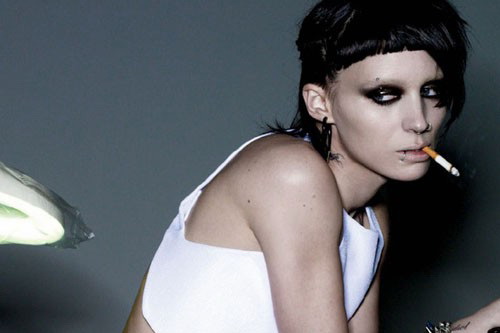|
Unless you’ve been living
under a rock these past few years or you’re Tom Hanks marooned on some
far-off
paradise then there is absolutely no chance that you have not been
exposed to
the phenomenon that is Stieg Larsson’s Millennium
Trilogy. Published posthumously after his death in 2004, Larsson’s
crime
novels have spawned a critically acclaimed Swedish film series, while
David
Fincher’s film is the first of the three
the English remakes. It is hard not to compare his piece with that of
Niels
Arden Oplev’s 2009 version, yet Fincher’s revision is highly original
and can
be viewed as a far more polished reworking of a story that has touched
millions.
The film begins with
disgraced journalist Mikael Blomkvist (Daniel Craig) after he is
convicted of
libel against a corrupt Swedish businessman. Resigning from his post as
co-editor of Millennium magazine,
Blomkvist is forced to take on a research case in order to pay the
damages
ordered by the court. The case in question concerns the disappearance
of a
young girl Harriet Vanger decades prior, with the Blomkvist’s
benefactor Henrik
Vanger (Christopher Plummer) believing that his niece was murdered by a
member
of his own family. Sifting through years of material and evidence,
Blomkvist is
forced to take on a research assistant and is recommended Lisbeth
Salander
(Rooney Mara), a computer hacker whose dark past prevents her from
forming any
long-term relationships or connections. Together the duo uncovers not
only the
mystery surrounding the disappearance of Harriet but also the skeletons
within
the Vanger family closet.

The film and story is driven
primarily by the unconventional relationship between Blomkvist and
Salander,
with the murder mystery playing second fiddle to the development of
both
characters. Daniel Craig is superb as the fallen writer and his
interactions
with the supporting characters are intense and well played. However, it
is
Rooney Mara’s turn as the tempestuous computer whiz that will have
audience and
critics astounded. Although her performance will forever be compared to
Noomi
Repace’s stellar embodiment within the Swedish trilogy, Mara manages to
make
the character wholly her own, with the vulnerability and youth
displayed in the
novels at the forefront of Fincher’s film. From the opening credits
featuring
Karen O’s (Of the Yeah Yeah Yeahs) rendition of Zed Zeppelin’s
‘Immigrant Song’
we are thrust into an entirely different world, far removed from the
Swedish
originals. Yes the budget was greater but Fincher manages to use every
cent to
his advantage, with picturesque shots of Stockholm, to the insular
community of
the Vanger family estate. What is particularly noteworthy for an
American
remake is Fincher’s exposure of the novel’s graphic violence with many
diehard
fans (this one included) feeling that the revision will be sugar-coated
to fit
the puritan values of the Western mass audience. Fear not for Fincher
does not
shy away from the nitty gritty and refreshingly does so in a manner
that is
relevant to the overall story.

There are several drawbacks
to David Fincher’s rendition, the chief being its oversaturation of
production
placement. You know its American when Blomkvist specifically asks for
‘Marlboro
Reds’ or when Mara’s character is continuously surrounded by McDonalds
papers
and leftover Coca-Cola cans. Is it really necessary? The film played
almost
like a Bond work, which revels in its consumerism and does not feel any
remorse
for showing off the latest Omega watch or the new Samsung smart phone.
Therein
lies the difference between the present adaptation and the Swedish
versions:
due to budget constraints Oplev’s film is more raw and attuned to the
basics of
the novels. Fincher’s The Girl with the
Dragon Tattoo preaches to the crowd with its intimate shots of the
Blomkvist/Salander
relationship and its preoccupation with trying to appear authentically
Swedish,
despite the English dialogue.
Whether you’re going to hate
it or love it, David Fincher’s The Girl
With the Dragon Tattoo is well worth viewing, if only to compare
it to both
the novels and the original Swedish versions. Although some of the
dialogue is
hard to catch and certain scenes lag, it is clear that Fincher knew
what his
audience wanted and he delivered. Here’s hoping that the critical
success will
not go to his head and that the following two films will be just as
thrilling.
|